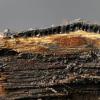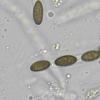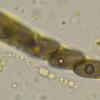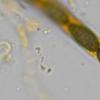
21-12-2025 21:32
Pol DebaenstHello, Garden, Burgweg 19, Veurne, BelgiumOn 10/1

22-12-2025 00:47
Patrice TANCHAUDBonsoir, récolte à proximité du milieu dunaire

21-12-2025 21:40
Isabelle CharissouBonjour, j'aimerais connaitre les références de

21-12-2025 21:31
Pol DebaenstHello, Garden, Burgweg 19, Veurne, BelgiumOn 10/1

21-12-2025 21:31
Pol DebaenstHello, Garden, Burgweg 19, Veurne, BelgiumOn 10/1

20-12-2025 23:08
Patrice TANCHAUDBonsoir, récolte sur sol sablonneux dans l'arri�

21-12-2025 09:32
Hello.A tiny ascomycete found embedded in wood in

20-12-2025 15:47
Mirek GrycHi.These grew on pine wood that was heavily covere
Hypoxylon s.l.
Stefan Blaser,
08-11-2019 17:43
Hello everybody,
I'm stuck with this collection and in need of some help.
I found it on a lying Tilia Trunk.
Macro:
Stromata in patches of variable size and shape from about 0.5-5 cm in Diameter. Very inconspicuous because they are nearly level with the wood surface. Stromatal surface dark brown, smooth, with very inconspicuous perithecial mounds that are level with the stromatal surface. Stroma about 0.6-0.8 mm thick with rather hard (carbonaceous) tissue. Perithecia globose to slightly tubular or pear-shaped, about 0.4-0.5 mm in diameter. Stromatal tissue yields no KOH-Extract.
Stromata in patches of variable size and shape from about 0.5-5 cm in Diameter. Very inconspicuous because they are nearly level with the wood surface. Stromatal surface dark brown, smooth, with very inconspicuous perithecial mounds that are level with the stromatal surface. Stroma about 0.6-0.8 mm thick with rather hard (carbonaceous) tissue. Perithecia globose to slightly tubular or pear-shaped, about 0.4-0.5 mm in diameter. Stromatal tissue yields no KOH-Extract.
Micro:
Asci 115-130 x 7-8 µm, with a short stalk, with no reaction in Melzer or IKI. Spores brown, smooth, nearly equilateral to slightly inequilateral, with a straight, spore-length germ slit, 11.5-14.0 x 5.5-6 µm.
Asci 115-130 x 7-8 µm, with a short stalk, with no reaction in Melzer or IKI. Spores brown, smooth, nearly equilateral to slightly inequilateral, with a straight, spore-length germ slit, 11.5-14.0 x 5.5-6 µm.
Thanks for any suggestions,
Best wishes,
Stefan
Jacques Fournier,
08-11-2019 17:58

Re : Hypoxylon s.l.
Hi Stefan,
no longer a Hypoxylon but a Biscogniauxia, B. cinereolilacina, host specific for Tilia.
The stromata are purplish when young and become blackish brown. Your detailed description fits well, including the often inamyloid reaction of the apical apparatus.
Nice find!
Jacques
Stefan Blaser,
08-11-2019 19:42
Re : Hypoxylon s.l.
Hi Jacques, thank you very much. In retrospect I'm wondering why I didn't consider the Genus Biscogniauxia...
I'm very happy about this find as I'm always looking for species of Biscogniauxia, Nemania and Hypoxylon I don't know.
Stefan
I'm very happy about this find as I'm always looking for species of Biscogniauxia, Nemania and Hypoxylon I don't know.
Stefan






